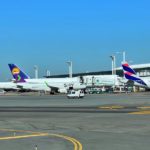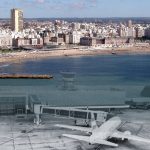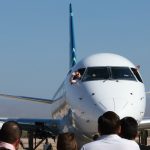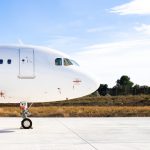After its accession to the European Union in 2004, Hungary witnessed a major growth in its aviation figures. Naturally, Budapest’s Ferenc Liszt Airport took the most of this expansion. From just under 4.5 million passengers in and out of the terminal in 2002, the figure in 2019 stood at over 16 million.
In 2022 the figure did not return to pre-pandemic levels, although it should get closer this year. Nevertheless, all of this growth means traffic grew considerably, and a large planespotting community has developed.
Budapest Airport’s «Cargodomb» (literally cargo hill) is one of its most popular spotting points, given its relative ease of access. There are other points in the perimeter of the airport and even an observation deck in the terminal, but this one provides the best view of arrivals when runway 13R is in use.
To get to Cargodomb, one can take the M3 metro line from downtown to its last stop, Kőbánya-Kispest. There, take bus line 200E, which goes to the airport. The stop to get to Cargodomb is Szemeretelep. From there, it is a 10 to 15-minute walk to the spotting point. From the airport, 200E also works, and it is a short trip to the bus stop.
A319 D-AIBD — LH1678 MUC-BUD
Lufthansa currently serves Budapest some nine times a day, connecting the city to its two hubs in Frankfurt and Munich. Here, «Pirmasens» arrives from Munich. It’s great to have the opportunity to photograph Lufthansa’s previous livery still.
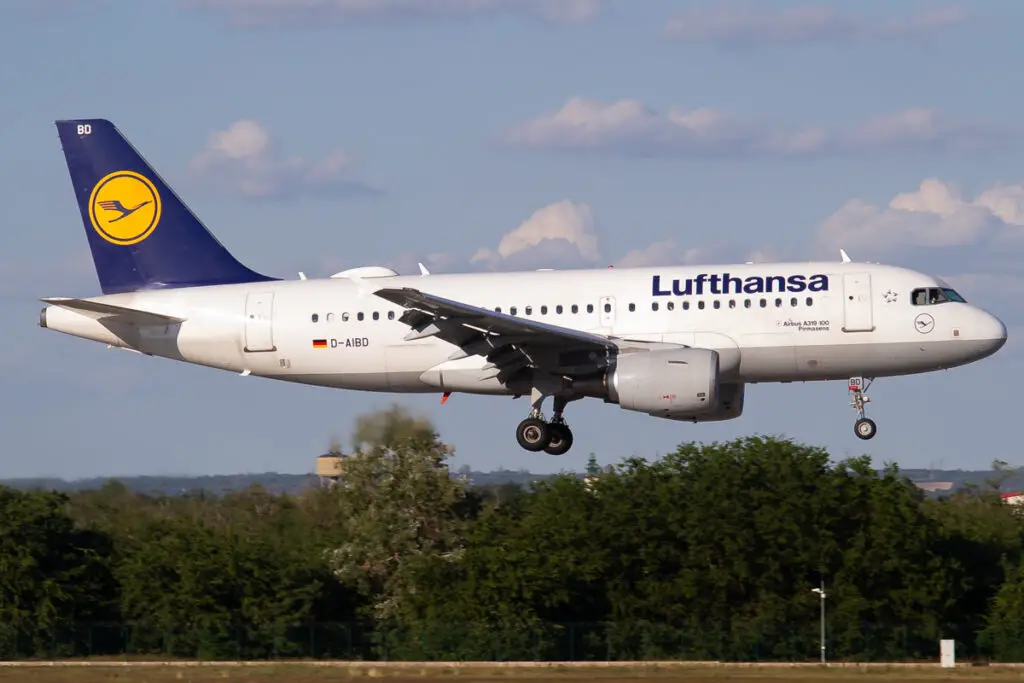
737-800 SP-RKG — FR2518 STN-BUD
Ryanair has an important operation in Budapest, with eight aircraft based in the city, according to Cirium’s Diio Mi application. Its operations in most countries in Central and Eastern Europe are undertaken by Buzz, also known as Ryanair Sun, with Polish-registered aircraft.
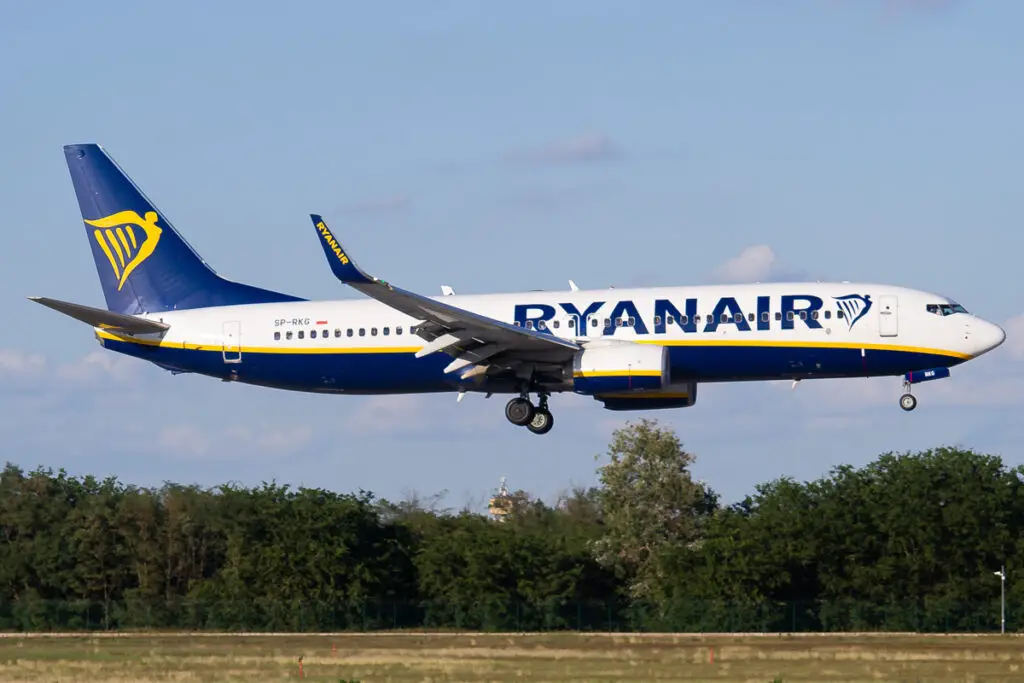
737 MAX 8200 SP-RZK — FR838 TLV-BUD
Of the eight based aircraft, currently two are the 737 MAX 8200 version, which carry 197 passengers, such as SP-RZK, which here is seen arriving from Tel Aviv.
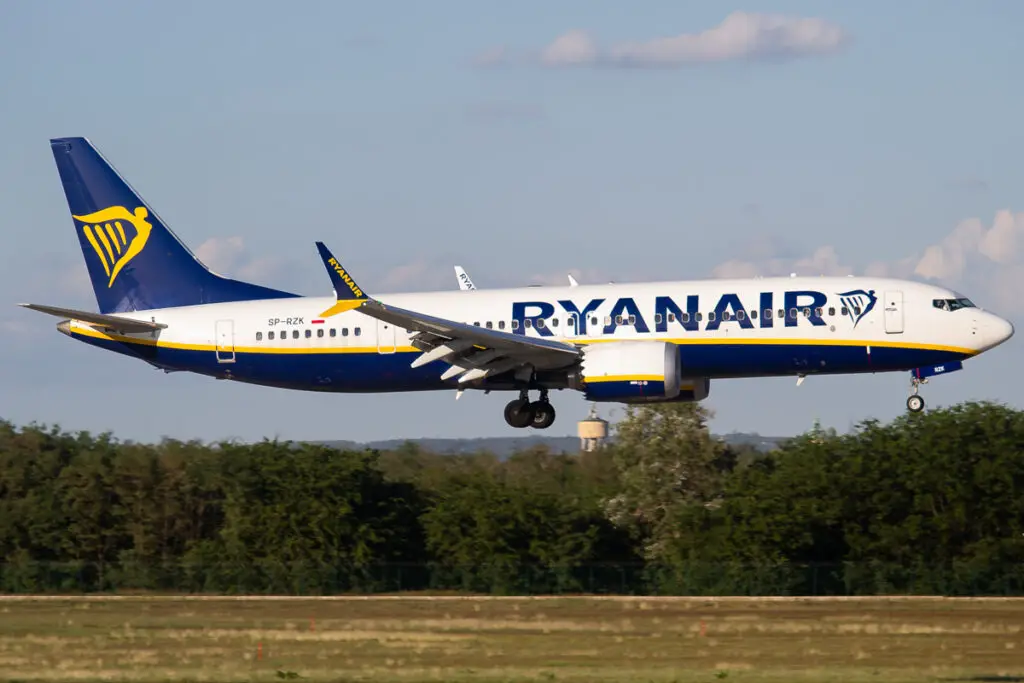
A321neo 9H-WAH — W62234 TIA-BUD
The largest airline in Budapest, meanwhile, is Wizz Air, which has twelve Airbus A321neo, configured with 239 seats, based in the city. 9H-WAH, seen in this picture arriving in style, is registered in Malta, belonging to the Wizz Air Malta business unit.

737-700 YR-BGG — RO237 OTP-BUD
The highlight of the day was TAROM’s retrojet, YR-BGG, officially named «Craiova» but known as «Goguţă». Romania’s state-owned airline operates twice a day between its base in Bucharest/Otopeni and Budapest, generally with its fleet of ATRs. This was a one-off, and luckily this special livery was picked.
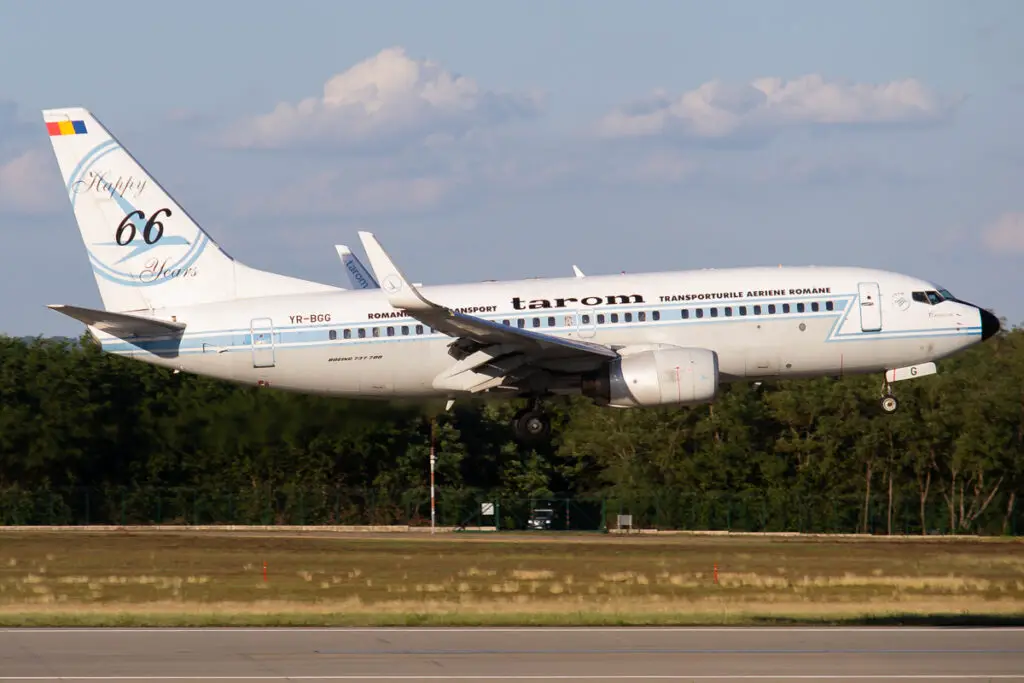
737 MAX 8200 9H-VVF — FR2107 BGY-BUD
Malta Air is currently Ryanair’s second-largest division by number of aircraft, with 161 aircraft, according to Planespotters.net. Its aircraft are stationed in markets such as Italy. It is the case of 9H-VVF, seen arriving from Bergamo.
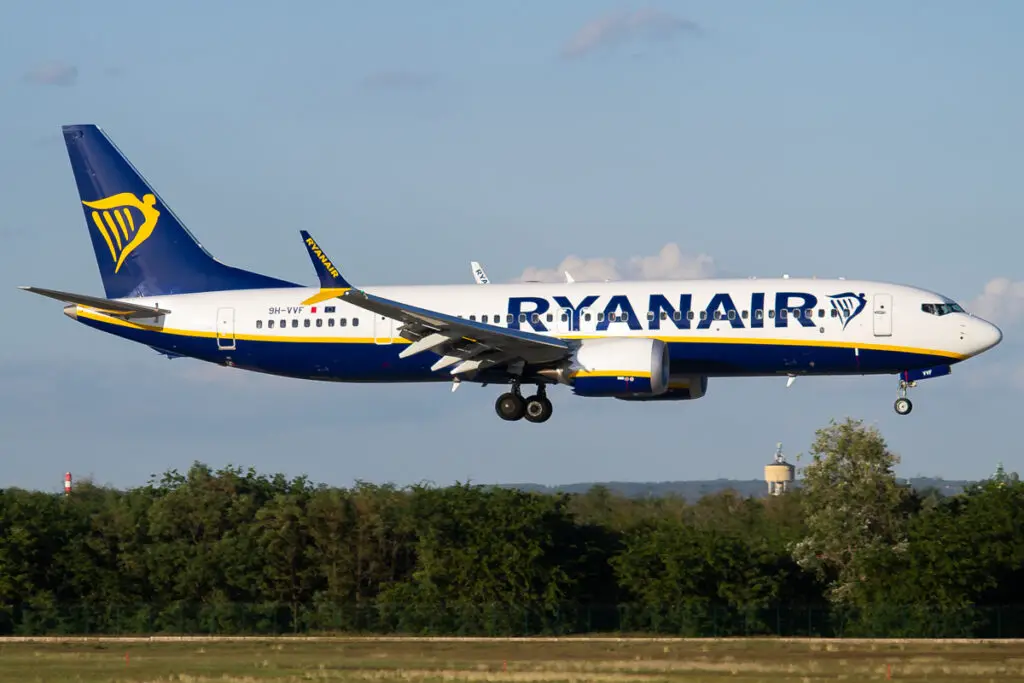
A321neo HA-LZX — W62496 MLA-BUD
Most of Wizz Air’s Budapest-based fleet is in the Hungarian registry. While the Malta unit has gained plenty of space in the fleet lately, Wizz Air Hungary remains having the largest fleet of the group — but not by much, according to Planespotters.net.
Here, HA-LZX is seen arriving from Malta. While the airline may currently has aircraft registered in the country, none are based there, so all flights to the country are operated by aircraft stationed elsewhere.
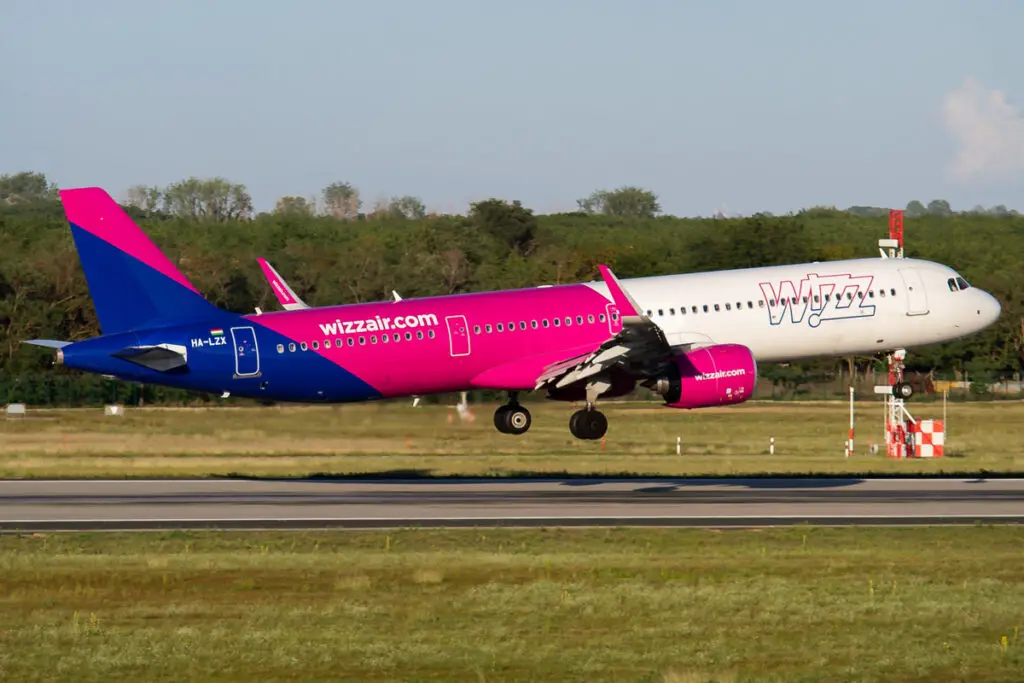
A319 G-EUOG — BA874 LHR-BUD
British Airways operates three daily flights between London/Heathrow and Budapest, its only presence in the airport. The London market is very competitive, although British Airways is the sole operator from Heathrow.
The Hungarian capital is also connected non-stop to Gatwick, Luton and Stansted, but Heathrow is the gateway in Britain to important long-haul destinations.

E190 SP-LMH — LO537 WAW-BUD
Another important hub operator that serves Budapest with a high frequency is LOT. The Polish flag carrier connects the Hungarian capital to Warsaw up to five times a day, always with its fleet of E-Jets. The airline also operates four weekly frequencies to Seoul using the Boeing 787.
In Budapest, LOT is basically half the size it was before the pandemic, according to data by Cirium’s Diio Mi application comparing the last quarter of 2023 with the same period in 2019. Then, the city was also connected to London City with the E-Jets, Kraków with the now-retired Q400. LOT’s long-haul operation also included Chicago and New York/JFK.
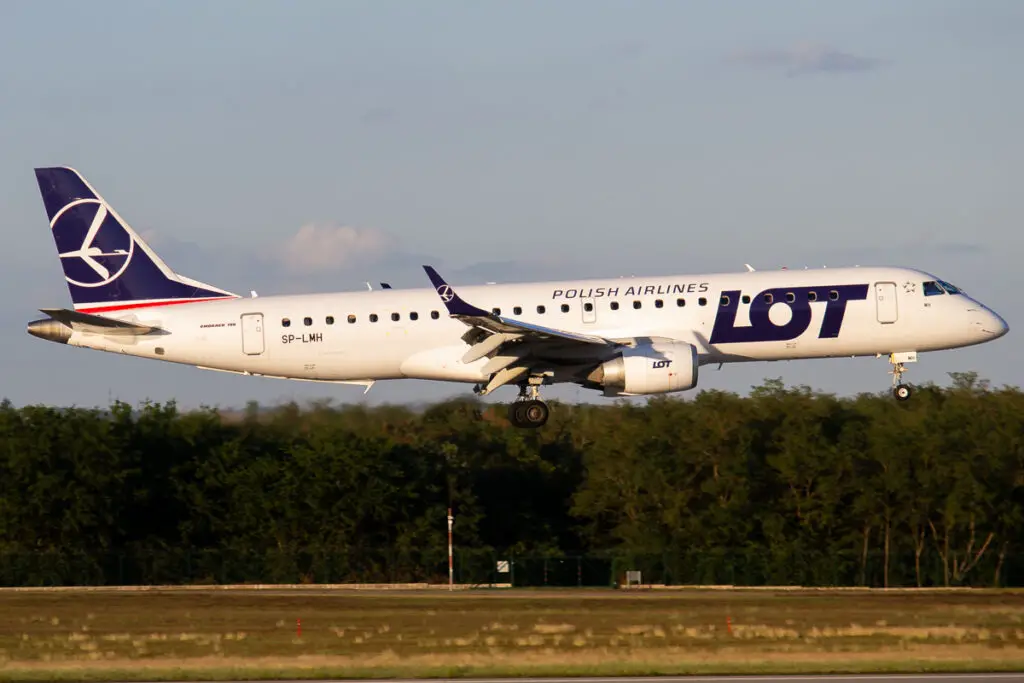
A320neo D-AINC — LH1340 FRA-BUD
Lufthansa’s second arrival from Frankfurt was again in an aircraft wearing the airline’s old colors. D-AINC was one of the first Airbus A320neo it added to its fleet. Currently the German carrier operates 34 A320neo and 17 A321neo.
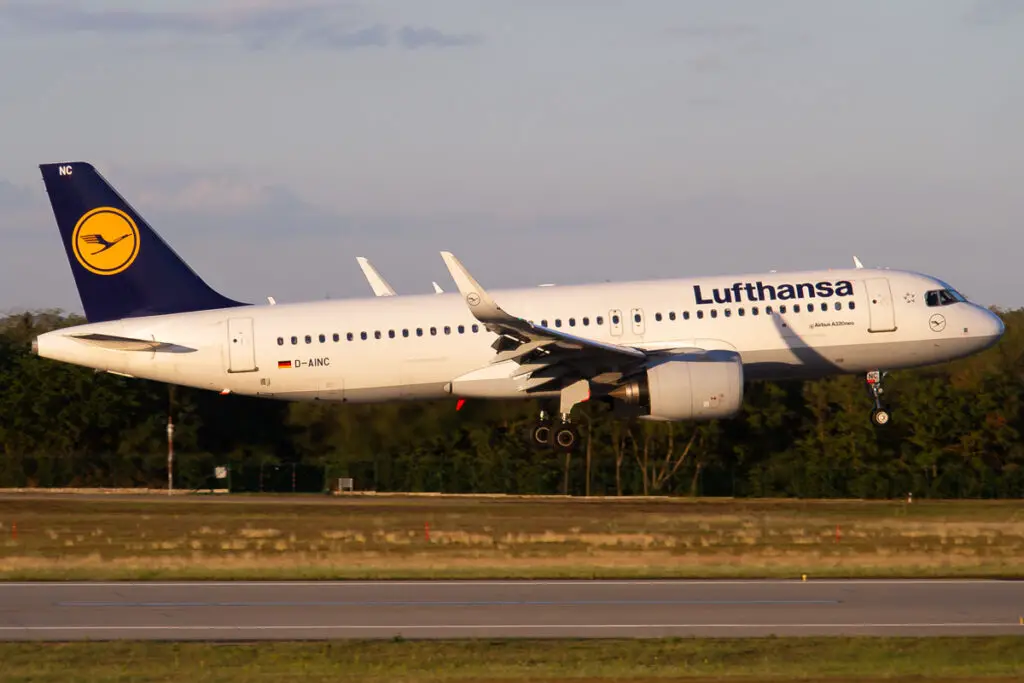
737 MAX 8200 SP-RZM — FR1242 ATH-BUD
At this point, there were just a few minutes of light remaining. This Ryanair flight got delayed just enough to have this photo taken in a very good light condition.
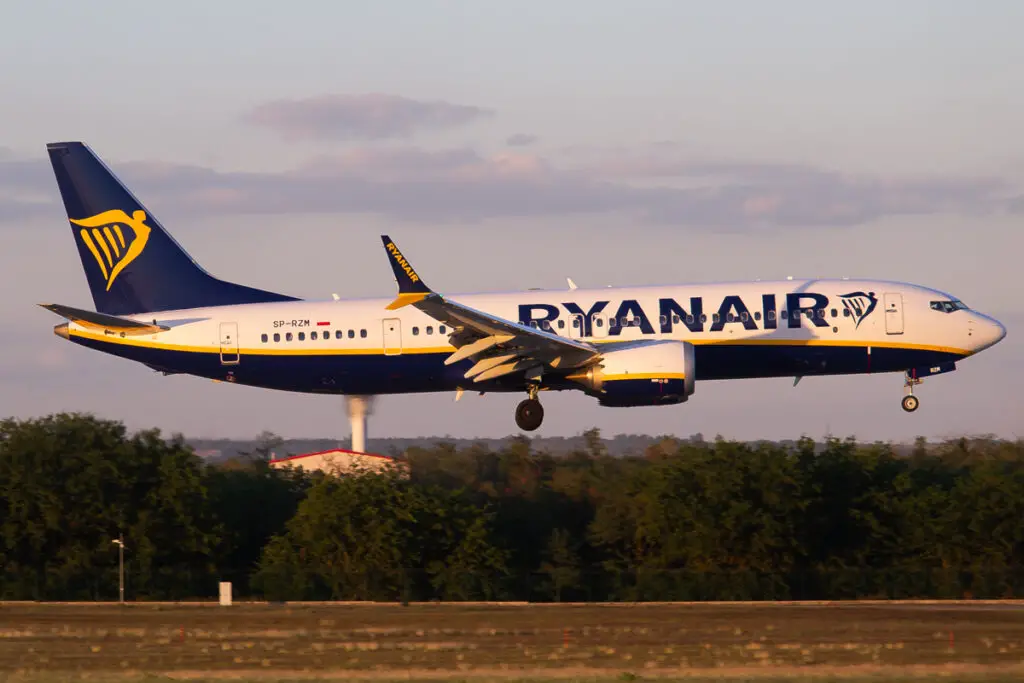
737-800 HA-LKG — 7O5223 HRG-BUD
Leisure airline Smartwings, from the Czech Republic, has its own Hungarian unit, Smartwings Hungary. It currently operates a single 737-800 and it is focused on charter operations: the only regular route from Budapest it sells on its website is a weekly run to Fuerteventura, with a single flight remaining this Summer season.
But the airline has an operation that requires two aircraft based in the city. As Smartwings Hungary only has a single aircraft, the other aircraft is operated by the Czech business unit.

737-700 PH-BGQ — KL1979 AMS-BUD
The last pictures before it got dark registered this Boeing 737-700 operated by KLM. The Dutch flag carrier connects Amsterdam to Budapest five times a day, and here «Golden Oriole» concludes the fourth frequency of the day.



